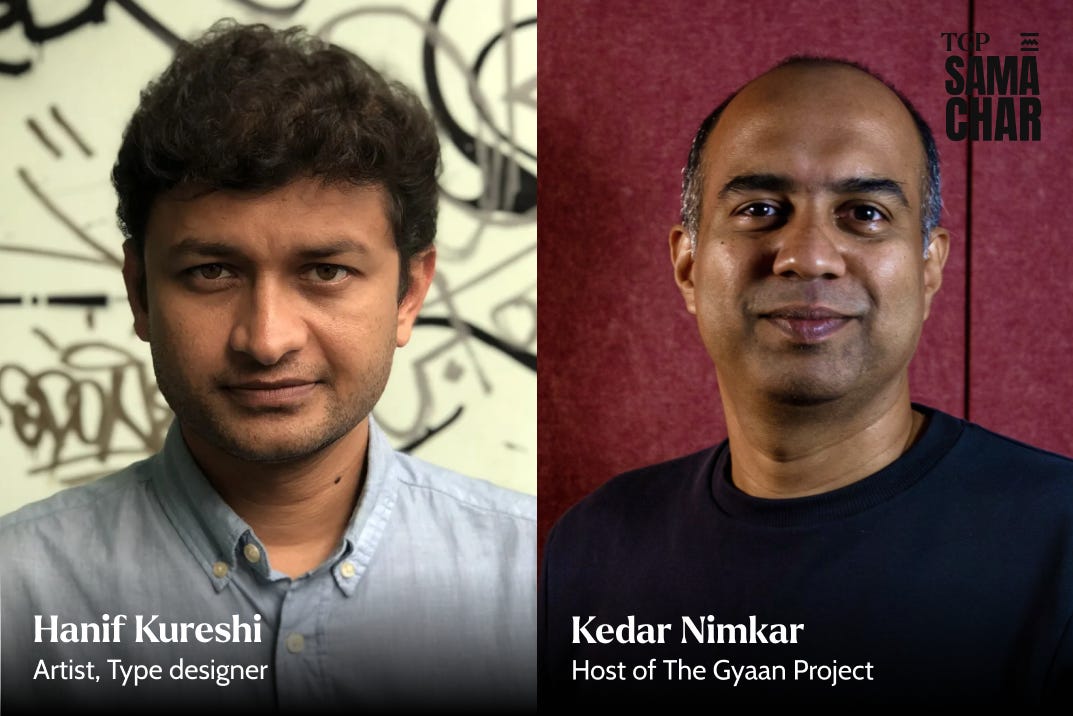4 reflections from Hanif Kureshi that shaped the street art movement in India.
Reminiscing Hanif Kureshi’s episode on street art in India, from Lodhi Colony to Sassoon Dock, celebrating his legacy and vision.
Hanif Kureshi (12 October 1982 – 22 September 2024) was a contemporary artist who worked with street art and typography. A pioneering figure in India who transformed urban spaces into public canvases. He was co-founder of St+art India and XXL Collective & Guerrilla. In episode #182, we spoke about murals, it’s impact on society, how did St+Art contributed to Swatch Bharat Abhiyan and all about street art.
This SamaChar is in his memory and wishing him belated happy birthday. Hanif, thanks for inspiring us all designers and artists.
1️⃣ How do you define graffiti and street art? How different are they?
Short Answer: Cousins, not twins.
Long Answer: Graffiti and street art often get confused, but they come from very different places. Graffiti in the West started with writing and tagging. Young people would invent a name or a tag and repeat it on trains, in subways, across the city. It was about rebellion, about being seen. On the other hand, street art grew out of a different culture. It is more visual, more about making something the public can engage with. In India, we always had a culture of painting on walls. From villages where huts are decorated, to public art that people could live with.
Know more as Hanif talks about reclaiming Streets, One Wall at a Time at TEDxIITHyderabad
2️⃣ How do you pick a subject for a mural?
Short Answer: Barber shop philosophy.
Long Answer: Indian streets are full of life. Barbers, shoe polishers, food vendors, families, everything. When picking a subject, the artist spends time around the wall, learns about the people and the local life. We give them freedom but make sure nothing religious or political comes up. The goal is art embedded in the city, not something offensive. Each mural is built from the surrounding context and intended for those living nearby. For eg: Sassoon Dock, Mumbai reflects the fishing community.
Read the back story of 150 ft mural of Mahatma Gandhi at the Police Headquarters in New Delhi
3️⃣ What are the pros and cons when street art reshape places?
Short Answer: Visibility versus gentrification.
Long Answer: A major pro is that people in the localities remember the painted areas. For example, in Shahpur Jat, people started giving directions based on the paintings, like “take a left from the cat”. A con is that if something becomes too popular, it can lead to gentrification, where an area becomes “cool,” prices go up, and low-income groups are forced to move. We are careful and work with government spaces to try and prevent this.
Hanif Kureshi was a saint and bandit of urban Indian street art. Know more at Stirworld. All photos are from https://www.stirworld.com
4️⃣ What’s your message to young artists listening today?
Short Answer: Walls are calling
Long Answer: You don’t have to wait for someone’s permission to start. When I began, nobody invited me or gave me a platform. I just picked up paint and went out on the street. The walls are free and they are always calling. If you feel that urge, pick up a brush or a spray can and go do it. You will learn more by painting one wall than by waiting for the perfect opportunity. The process itself will teach you. That is how street art lives and breathes, by being out there, in the open, for everyone to see.
A One-Man Revolution: The Artistic Legacy Of The Late Hanif Kureshi. Know more on Re-thinkingthefuture.com
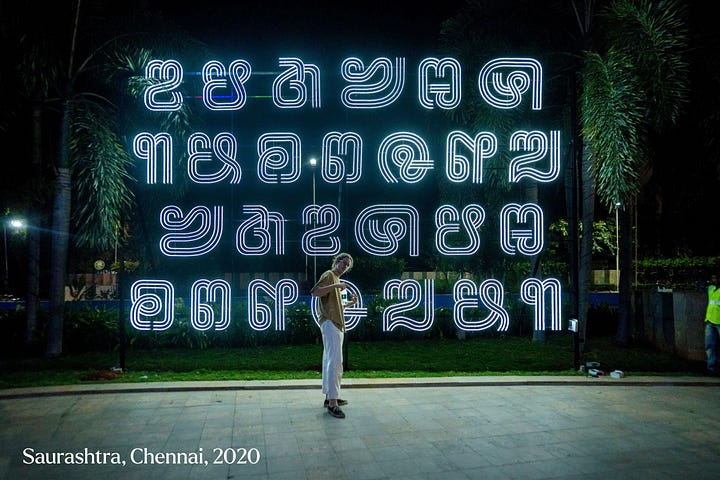
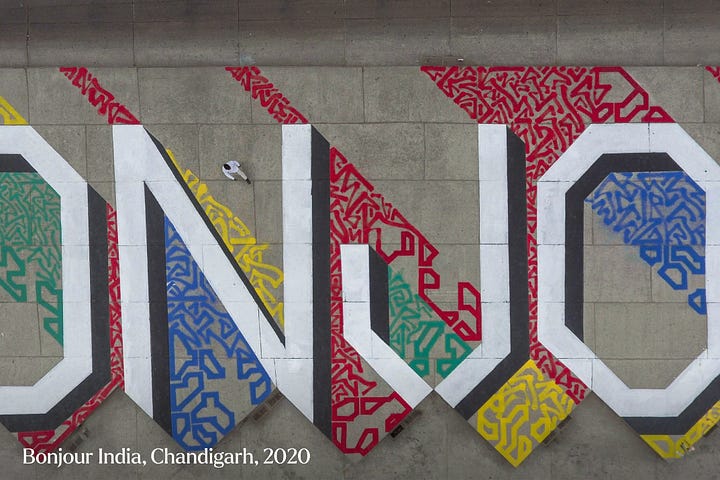
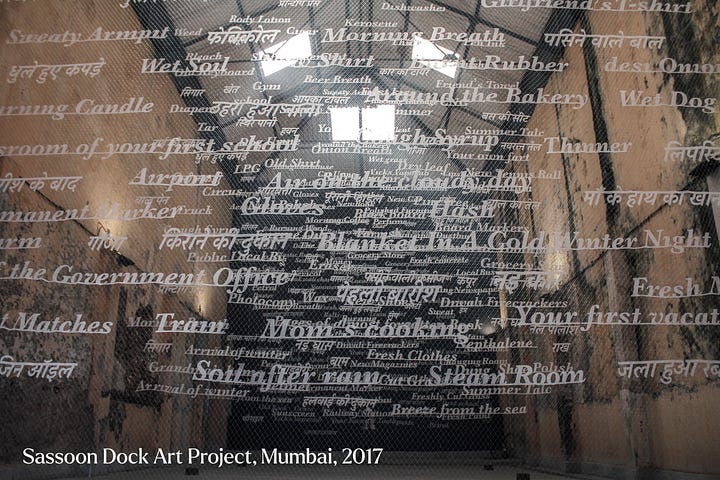
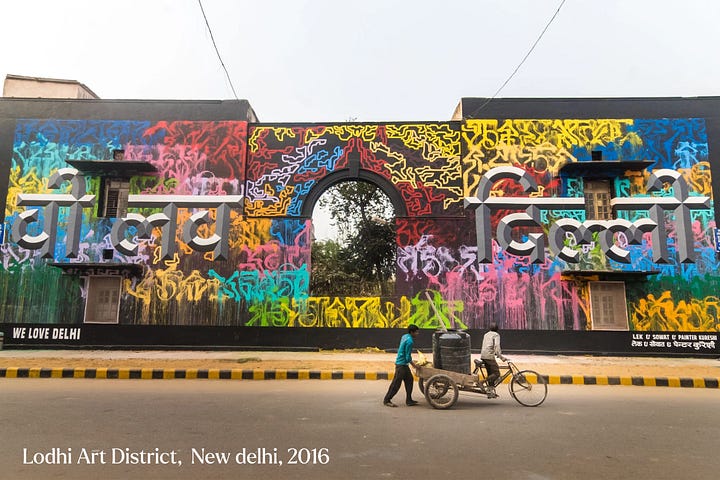
Hanif Kureshi’s murals and ideas gives us perspective to see our streets in a different light. His birthday was on 12 October and today he would have tuned 43. This SamaChar is a small tribute to celebrate his vision that continues to inspire us all.
Comment what resonated with you the most. This project is ad-free and labour of love since 2016, so sharing, liking, commenting can make a huge difference.
If you wish to listen to the entire episode, please find all links here: Spotify | YouTube | Website | Apple Podcasts.
Similar episodes you might like
If you enjoyed this post, here are few more on murals, street art that might interest you.



